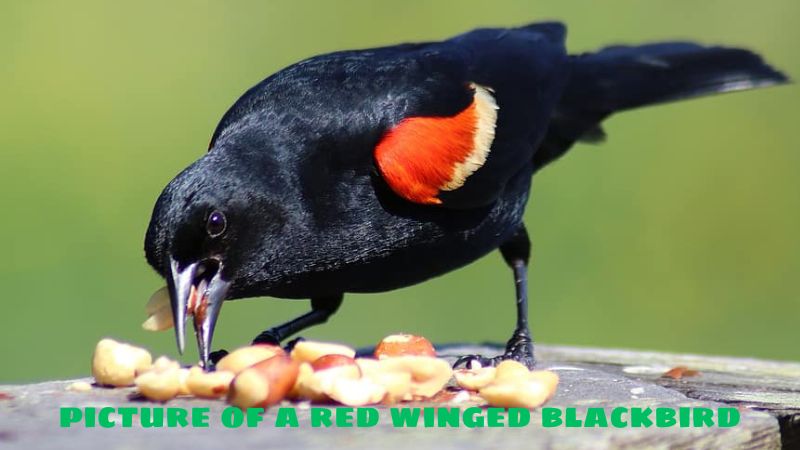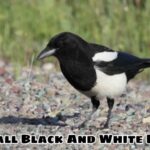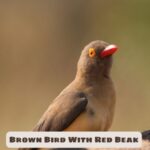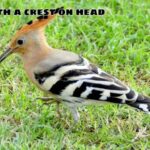In the colorful picture of wild nature, the Red-winged Starling stands out as a special highlight with its shiny black plumage and brilliant red wings. This bird not only attracts attention with its eye-catching appearance but also with its diverse, chirping sounds and impressive ability to imitate sounds. Red-winged starlings are an integral part of the ecosystem, helping to control insect populations and pollinate plants. Let’s learn about this picture of a red winged blackbird with Exoticbirdscorner!
Introducing the picture of a red winged blackbird
The red-winged starling (Onychognathus morio) is a medium-sized starling, famous for its jet-black plumage and striking red wings. This bird has a body length of about 20-24 cm, the female is similar in size. They have strong black beaks and gray legs.
The red-winged starling is widely distributed in East Africa, from Ethiopia to South Africa. They often inhabit open lands such as grasslands, savannas, scrub forests and agricultural areas. This bird species is well adapted to diverse habitats and can easily be found in both coastal and alpine areas.
Living in flocks, red-winged starlings are famous for their chirping, diverse songs and impressive ability to imitate sounds. They are intelligent birds, capable of learning and solving problems well. Red-winged starlings play an important role in the ecosystem, helping to control insect populations and pollinate plants.
Appearance characteristics of red-winged starlings
The red-winged starling has shiny black feathers, creating an impressive contrast with its brilliant red wings. This red color is more prominent in male birds than in female birds. The bird’s entire head, neck and chest are jet black, with a strong black beak and gray legs.
The adult bird’s body is about 20-24 cm long, with a wingspan of 35-40 cm. The shape of the red-winged starling is quite round with a short tail and stubby legs. In general, the red-winged starling has a striking and strong appearance, easily attracting everyone’s attention.
However, there are some slight differences in appearance between male and female birds. Male birds often have sleeker jet-black plumage and more vibrant red on their wings than female birds. In addition, the body size of male birds may also be slightly larger than that of female birds.
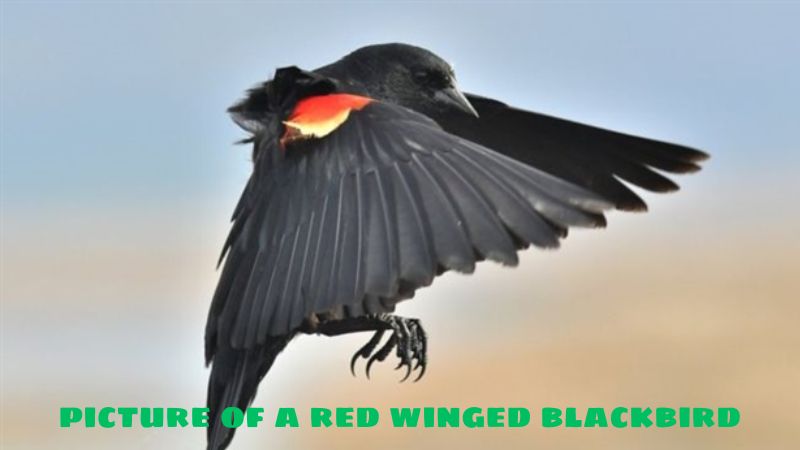
Daily behavior of red-winged blackbirds
Red-winged starlings are intelligent and highly social birds. They often live in herds, which can number up to hundreds of individuals. Herds move together to feed, rest and protect territory.
Red-winged starlings are omnivores, their main food includes insects, fruits, seeds and nectar. They often forage on the ground, using their strong beaks to dig and find food. Red-winged starlings are also opportunistic predators, willing to attack small animals such as lizards, frogs and young birds.
These birds communicate with each other using diverse, chirping songs and impressive sound imitation abilities. Their songs can convey many different information such as warning of danger, attracting mates or protecting territory. Red-winged starlings also use body language to communicate, including fanning their feathers, bowing their heads, and wagging their tails.
Red-winged starlings have complex social behavior, demonstrated by cooperative hunting, food sharing, and childcare. They also have a hierarchy within the flock, with the alpha bird having the role of leader and protector of the flock. The red-winged starling is an intelligent bird and adapts well to diverse habitats, playing an important role in the ecosystem.
Reproduction and raising chicks of red-winged blackbirds
The breeding season of red-winged starlings usually takes place during the rainy season, from September to April of the following year. They often choose high tree branches, tree hollows or roof ledges to nest. The nest is made of twigs, dry grass and mud, lined inside with soft leaves and feathers.
Both male and female birds participate in nest building. After completing the nest, the female will lay 3-5 light blue eggs. Both birds take turns incubating the eggs for about 14-16 days. When the baby birds hatch, both father and mother birds take care of, feed and protect the babies. Young birds will learn to fly after about 3 weeks and will be fully grown after 2 months.
Red-winged starlings are highly family-oriented birds, parents often stay with their young after they become adults to teach them how to forage and survive. Red-winged starlings have an average lifespan in the wild of about 10-15 years.
Dangers and conservation of red-winged blackbirds
Although they are intelligent and well-adapted birds, red-winged starlings still face a number of dangers in the wild. Shrinking habitat due to urban development, forest exploitation and use of agricultural chemicals are the main causes affecting their numbers. Besides, red-winged starlings are also hunted as pets or for meat, especially in some areas.
Aware of these risks, conservation organizations and governments have deployed many efforts to protect the red-winged starling. Educational programs to raise awareness about the importance of this bird to the environment and ecosystem are widely carried out. Protected areas have been established to protect the red-winged starling’s habitat, and measures to control illegal hunting and trade are also in place.
In addition, scientific research on the behavior, reproduction and migration of red-winged starlings is also conducted to gain more information about this bird, thereby providing more effective conservation measures.
Protecting the red-winged starling is the shared responsibility of each individual and community. We can contribute to protecting this bird species by limiting the use of toxic chemicals, planting trees to create habitat for birds, participating in conservation activities and propagandizing to raise awareness of its importance. The importance of red-winged starlings to the environment.
With the efforts of conservation organizations, governments and communities, it is hoped that the red-winged starling will be protected and develop sustainably in the future.
Epilogue
The red-winged starling, with its iridescent jet-black plumage and brilliant red wings, is a beautiful symbol of wildlife. These intelligent and highly social birds play an important role in the ecosystem, helping to control insect populations and pollinate plants. However, red-winged starlings are facing many dangers due to habitat loss, hunting and chemical use. Protecting the red-winged starling is the shared responsibility of each individual and community. Let’s join hands to protect this precious bird to preserve biodiversity and the beauty of nature.

